Why São Tomé and Príncipe Should Be on Your Travel List
Exploring this tiny nation off the west coast of Africa, Paul Bloomfield discovers its complex culture, astonishing natural beauty, and the chaotic fun of Principe’s biggest festival, the Auto de Floripes.
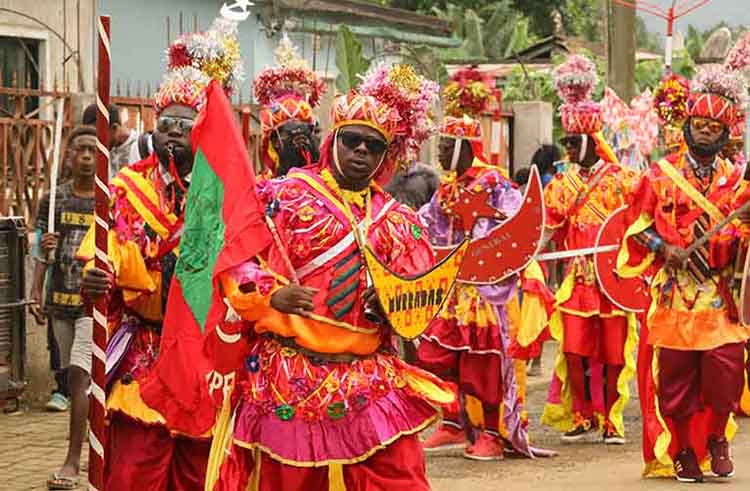 Photo © Paul Bloomfield
Photo © Paul Bloomfield
- Plantation life on São Tomé
- Birds and breadfruit on Príncipe
- The Auto de Floripes carnival in Príncipe’s capital
- Trip notes
São Tomé and Príncipe may be the most enchanting specks you never heard of. This remote twin-island nation lies adrift in the Gulf of Guinea, off Africa’s west coast, its lushly forested volcanic peaks bustling with biodiversity – hosting some 30 endemic birds and dozens of other species, it’s been dubbed the “African Galápagos”.
But beyond spotting grey parrots, hearing the pip-pip-pip of the dazzling Príncipe kingfisher, and gawping at humpbacks breaching off a coastline fringed with glorious golden beaches, its patchwork heritage is what makes this such a fascinating destination.
I arrive on the islands in August 2019, lured by the promise of intriguing post-colonial culture and one almighty party – Príncipe’s biggest annual street festival.
Plantation life on São Tomé
My introduction to the archipelago’s sometimes murky past begins with a foray from São Tomé City south to crumbling plantations, fishing communities, and soaring peaks of phonolithic rock. Local guide Jeremiah provides a condensed history as our driver dodges minibuses, bikes, and girls toting bottles of palm wine on their heads.
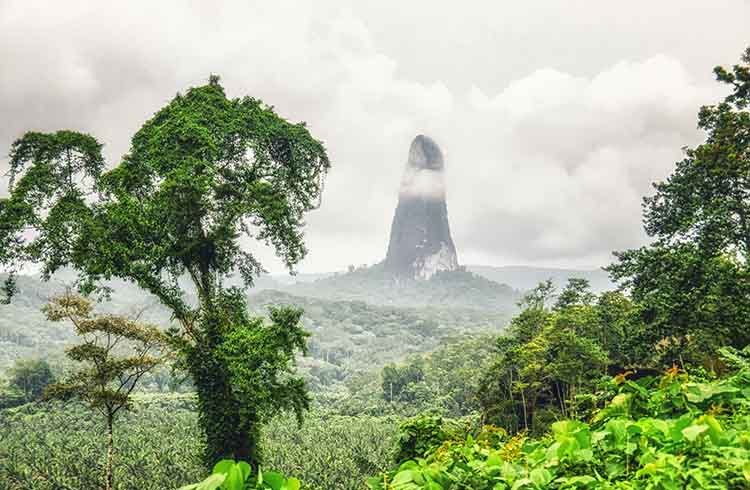
“According to tradition, Portuguese sailors landed here on December 21, 1470, reaching Príncipe the following month,” he tells me. “Enslaved people from mainland Africa were shipped in to work sugar cane plantations, later superseded by coffee and cacao.” After slavery was abolished in 1869, plantation owners recruited serviçais contract workers from Angola, Mozambique, and, particularly, Cape Verde; many were stranded after promised tickets home failed to materialize.
We turn off the coast road to visit Roça Água Izé, one of the largest plantations where, at its peak in the early 20th century, around 2,500 contract workers grew and processed cacao. After independence from Portugal in 1975 the industry withered, but many of the serviçais and their descendants still inhabit ramshackle plantations such as this.
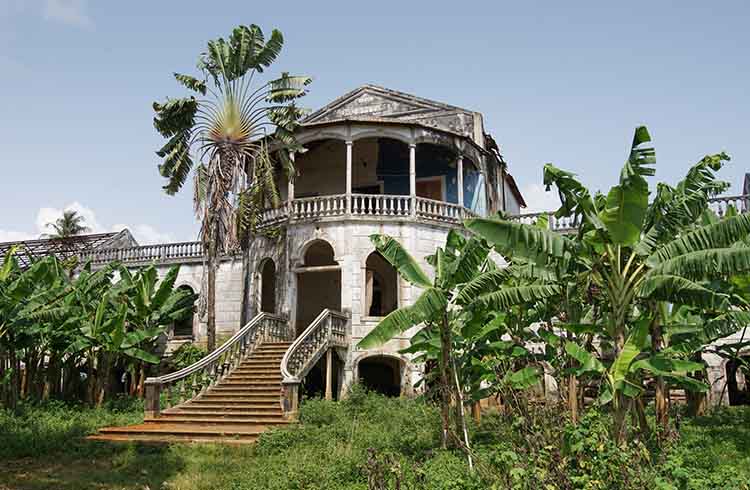
Jeremiah leads me along the broken stone roads, past lojas (corner shops), bars, a school, a church, chickens scratching in the dust, with cacao beans and fish spread out to dry on mats. Giggling kids wave and scamper past as their smiling parents look up from gossiping on front steps, and fishermen’s dugout canoes lie hauled up on the beach below. This plantation, really a tumbledown mini-town, is a far cry from Gone with the Wind glamour – yet it’s an inescapably vibrant, welcoming community of a kind echoed across both islands.
Birds and breadfruit on Príncipe
Next day, having taken the short flight Príncipe, the pace drops a couple of notches even from São Tomé, down from ‘léve-léve’ (slowly) to ‘móli-móli’ – there’s no direct translation, but “somnolent” comes closest. The island’s inhabitants, most descended from Cape Verdean serviçais, subsist by cultivating crops and harvesting plants growing wild in the steamy jungle cloaking the interior.
On a languid but sweaty hike up Pico Papagaio (Parrot Mountain), with palm swifts and spinetails flitting overhead, my guide Brankinho points out izaquente (African breadfruit), yucca, banana bushes, peppercorns, and micocô, a wild herb popular in omelettes. As I peer through a break in the trees at phonolithic pinnacles rearing from the emerald forest, Brankinho returns from a foray bearing a huge jackfruit. I test it for weight – then spend 10 minutes trying to peel the sticky sap from my fingers.
The Auto de Floripes carnival in Príncipe’s capital
A platoon of fearsome warriors swarms around me, clad in hellfire yellow and Hades red. They wield swords and lances, and carry shields declaring their names: there’s Rei Diablo (Devil King), Rei Burlante (Swindler King), and Rei Tempeste (Storm King). Gigante (the Giant) overshadows all. Drums pound, whistles shrill, voices boom. There’s a battle brewing.
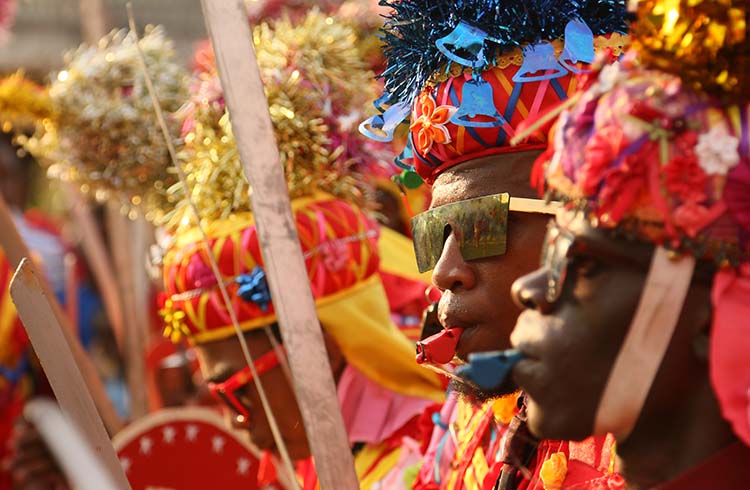
None of the hundreds of onlookers seem alarmed, perhaps because they’ve seen it before. Every August, the Auto de Floripes – the annual re-enactment of a legendary clash between Moors and Christians – sees Príncipe’s tiny capital, Santo Antonio, packed with locals and a smattering of visitors. All day and into the night, vividly costumed performers march, play-fight, and declaim the tale of Imperador Carlos Magno (Charlemagne) facing a Saracen king.
Yet this is no humorless history lesson, but a chaotic, exuberant carnival. The streets swarm with hyperactive youngsters overdosing on sugary candy floss, popcorn, fried bananas, and doughnuts. Demonic-looking bobos (jesters) play pranks on the crowds. Adults are abuzz, too, munching barbecued crab and sea snail washed down with chilled Rosema beer. Everywhere I look, I’m met with beaming smiles. Even the Giant poses for photos with a grin.
Like so many other former colonies, Príncipe is poor – if measured in dollars. But its people, proudly generous, are delighted to share their natural, cultural, and personal riches with the few visitors who reach this intriguing, isolated island nation.
Trip notes
Getting there and around
TAP Air Portugal flies four times weekly from Lisbon to São Tomé with a stop in Accra. STP Airways makes the 35-minute hop between São Tomé and Príncipe six times weekly.
Local transport on São Tomé consists of yellow taxis and shared minibuses; on Príncipe, locals rely on hitching.
Local tours
On Príncipe, Brankinho (Facebook: Guia Bio Doctor Brankinho) guides hikes.
Further information
June to September is the main dry season, though expect rain anytime; it’s always hot and humid.
Related articles
Simple and flexible travel insurance
You can buy at home or while traveling, and claim online from anywhere in the world. With 150+ adventure activities covered and 24/7 emergency assistance.
Get a quote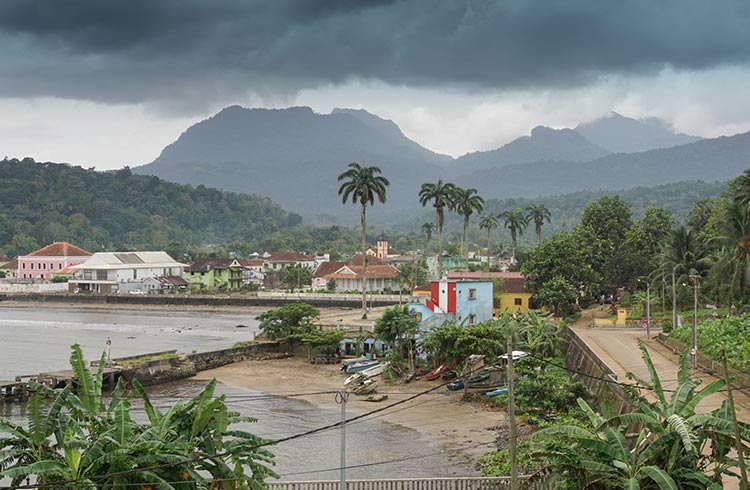
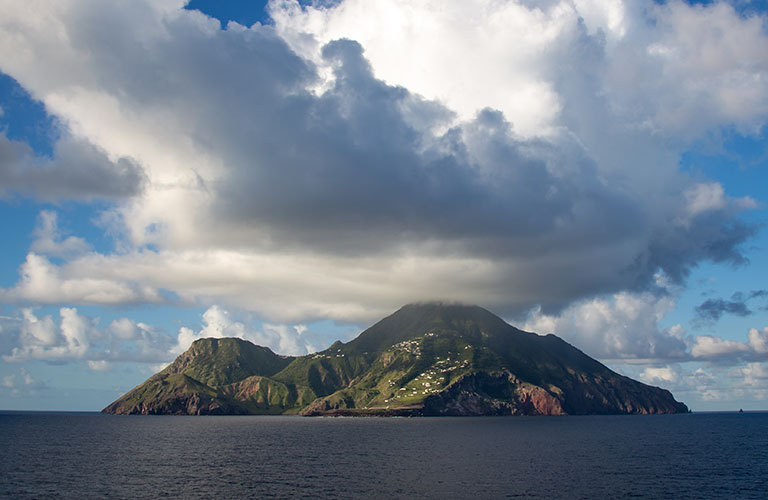
1 Comment
Por que São Tomé e Príncipe deve estar na minha lista de viagens para
Explorar esta pequena nação na costa oeste da África, e descobrir sua cultura complexa, beleza natural surpreendente e a diversão caótica do maior festival de Principe, o Auto de Floripes.